16 Companion Plants for Lettuce (With Pictures)
-
Pete Ortiz
- Last updated:

Lettuce is one of those crunchy, low-calorie veggies that keep us healthy. It strengthens the bones, hydrates the body, and even helps you sleep better at night. Now, if you have a garden in the backyard, you’ve probably thought about growing lettuce there. Or maybe you already have it planted, and the leaves are starting to poke through.
But what if the crops aren’t growing as fast as you hoped? What if the roots are being ravished by destructive bugs? Companion planting is the answer! It will protect the plants against pests and harsh weather conditions while ensuring steady growth. You’ll find the best companion veggies and flowers for lettuce in our detailed guide. Plant them next to lettuce and watch them thrive!
Companion Planting: Does It Really Work?
The short answer is yes, it’s worth all the trouble. The idea behind companion planting is rather simple yet effective. When you grow certain plants close together, they benefit each other by attracting more wildlife, natural predators that feed on pests, and pollinators that increase the harvest. Next, companion planting is a great way of maximizing your garden space and producing more crops.
The soil, in turn, will become healthier and get more nutrients (nitrogen, potassium, and phosphorus). In addition, plants that flourish faster provide shade for the slow growers. The list of companion plants for lettuce is quite large—there’s enough to pick from! So, let’s start with vegetables and then move on to flowers.
The 16 Best Companion Plants for Lettuce
Vegetables and Fruit
Most gardeners tend to grow veggies and fruit in the same space, but we do that unconsciously. If you sow the following plants alongside lettuce, they’ll protect one another from the scorching sun and aphids and thrive together. As a bonus, the lettuce will grow bigger and even taste better. Here are our top companion plants for lettuce:
1. Onion, Garlic, and Shallots

Field pests like caterpillars, cutworms, and whiteflies eat lettuce leaves. Thankfully, you can keep them all at bay if you plant onions right next to lettuce crops. Shallots and garlic will be even more effective at repelling these bugs, along with beetles and aphids. Not only do these plants release a deterring scent, but they also mask the natural odor of lettuce, confusing critters and bugs.
Another big pro: most species from the Allium family are root crops. That means they grow deep, leaving the surface area for the lettuce roots. This way, you can maximize the space in your garden while creating a “barrier” against a wide range of destructive insects. Don’t grow onions next to peas or beans, though!
2. Scallion/Spring Onion
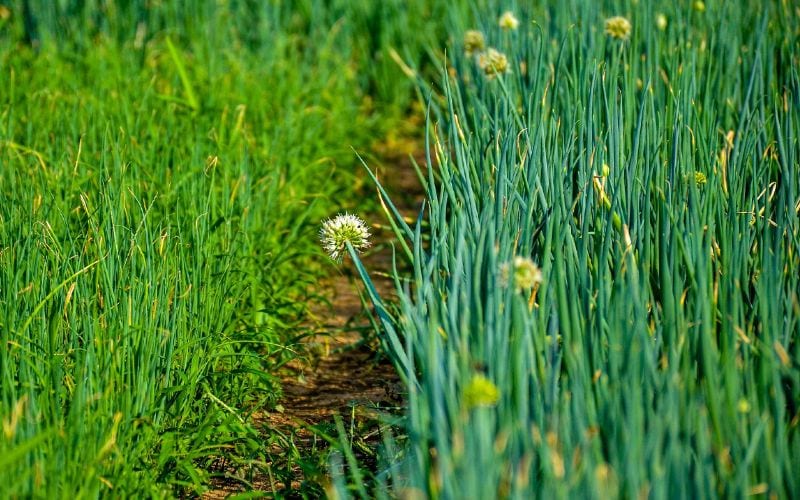
And what about the green onion? Is it a good companion plant for lettuce? Absolutely! It does have a slightly milder taste, though. So, if you’re dealing with a huge infestation of aphids, onion or garlic will be a better pick. With that said, interplanting scallions with lettuce will keep most garden pests away. Besides, spring onions are a great source of vitamins C, A, and K, along with a healthy dose of minerals.
3. Radish and Parsnip
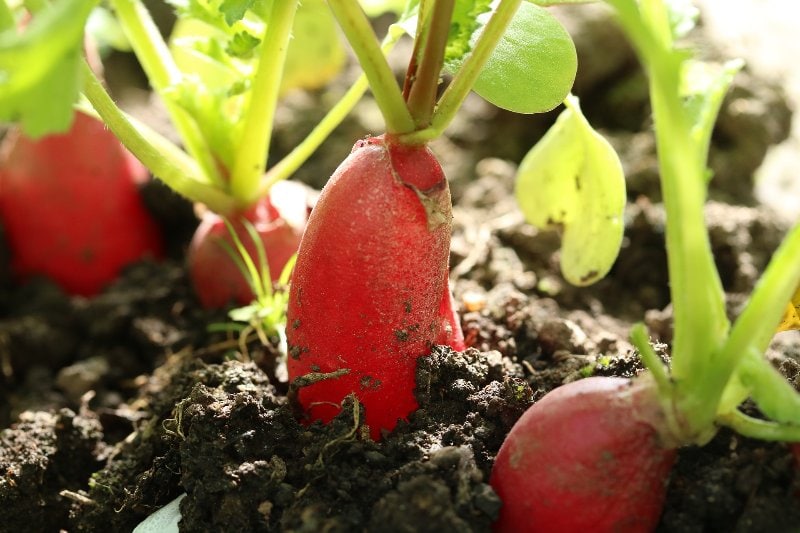
Lettuce is often planted alongside radishes as it’s known to make them last longer and taste better. Radishes, in turn, are excellent “markers” for lettuce. Since they grow much faster, you can track their growth and figure out exactly where the lettuce roots will go and how many crops they’ll produce. And one more thing: lettuce roots are very shallow. They don’t go deep into the soil looking for nutrients.
That sets them apart from parsnips that prefer to utilize the underground space (yes, just like onions and garlic). In addition, both radish and parsnip are great at repelling a long list of pests, including Cabbage maggots and Squash bugs that like to feast on leafy crops like lettuce.
4. Asparagus and Turnips
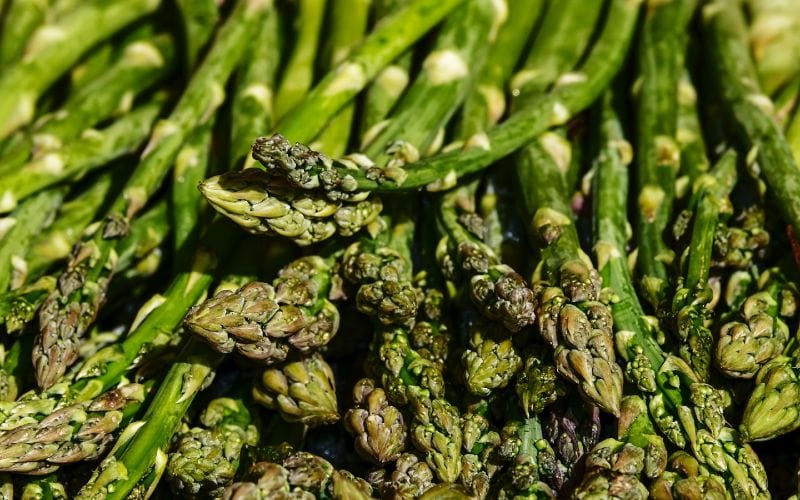
This plant is rather tall and has wide, fern-like leaves that will protect vulnerable lettuce crops from scorching sunlight. Otherwise, you’ll end up with wilted and withered lettuce leaves that don’t look or taste that great. For the asparagus plants to reach the necessary height, it’s recommended to leave some of the crops behind for the winter. Next year, they’ll grow bigger and be able to provide the necessary shade.
Now, turnips don’t have large leaves, nor do they grow tall. They do, however, deter deadly bugs. Besides, they grow underground and make room for lettuce crops.
5. Eggplant
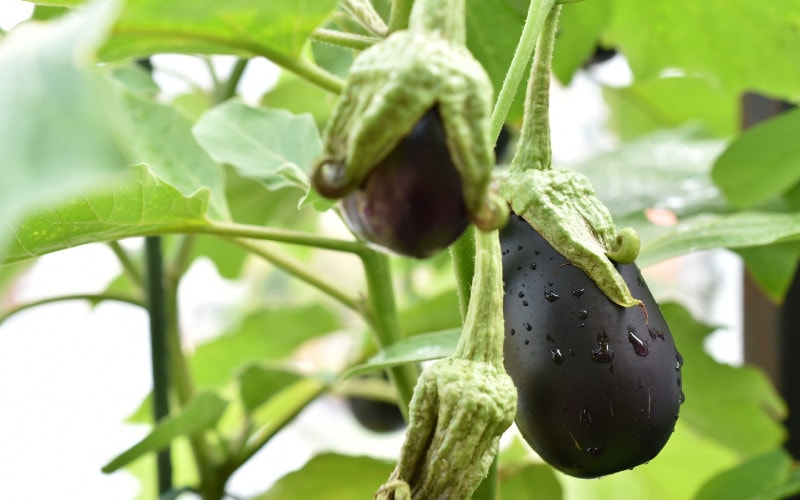
The best thing about the eggplant is that it can easily withstand summer heat, which can’t be said about lettuce. Therefore, if you plant it right next to your lettuce crops, the eggplants will be able to cover it. This might not be a problem during spring or even fall, but once it gets really hot and the sun starts to scorch everything above the soil, the shade provided by eggplants will save your lettuce plot.
6. Carrots
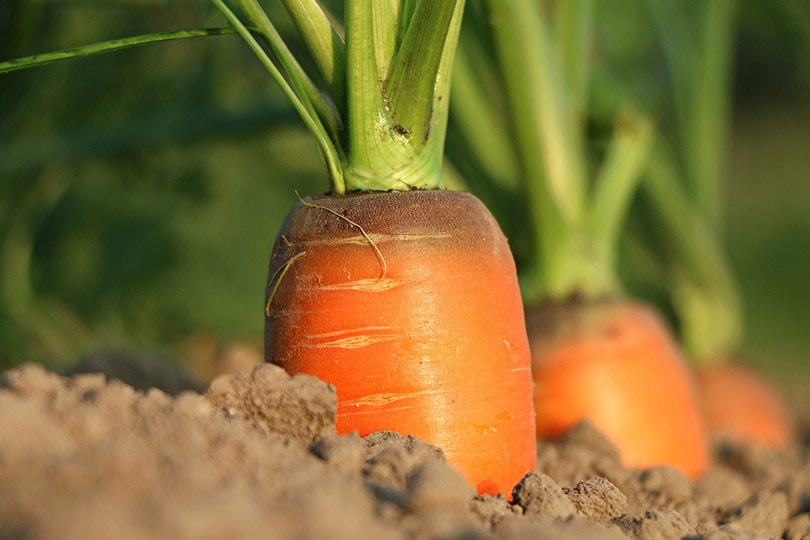
Carrots are among the best companion plants for a gardener. They don’t attract any bugs, steal nutrients, or prevent the roots from developing. That’s because, like most vegetables on the list, carrots are a root crop and don’t spread across the surface. Instead of competing for nutrients and water, they’ll protect lettuce from pests and flourish together. Carrots won’t necessarily go well with other root crops, though. Keep that in mind.
7. Beets
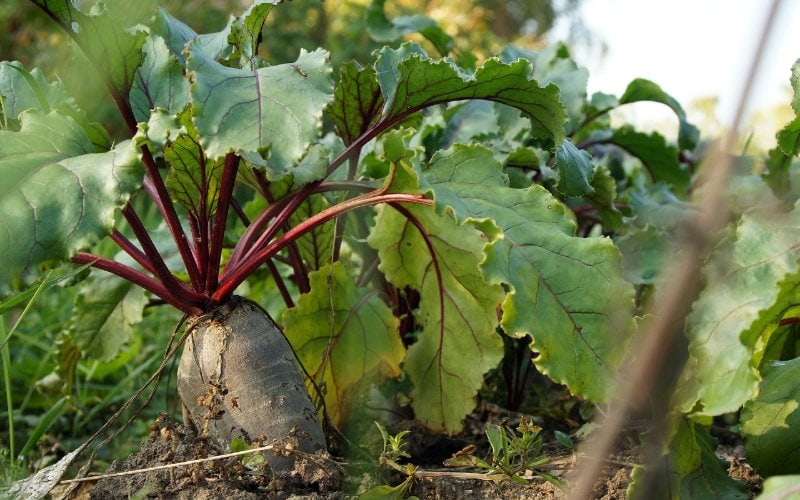
There’s very little not to like about beets. They are tasty, nutritious, and healthy, not to mention low-calorie and easy to add to a wide range of recipes. More importantly, they are an excellent companion plant for lettuce. Don’t be afraid to plant them in the same area. In fact, the closer you sow the seeds, the better. The reason: beets will add minerals like magnesium to the soil that lettuce can “feed” on.
In return, lettuce will keep weeds away from the beets, allowing them to grow faster.
8. Melons and Squash

In gardening, every single inch counts, and that’s why companion planting is such a common practice. So, if you like to grow squash and melons, go ahead and plant them with lettuce. Like most members of the Brassicaceae family, lettuce is a fast grower. When the melon and squash crops become big enough to spread across the soil, the lettuce leaves will be ripe for harvest.
And, depending on the species and the area that you live in, the squash plants will cover lettuce from sunlight.
9. Peas and Beans
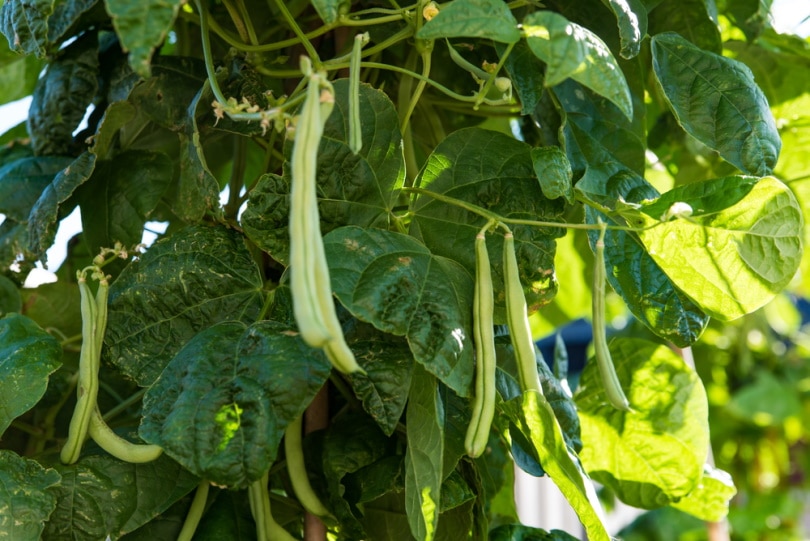
Legumes are appreciated for their ability to enrich the soil with nitrogen. And they are highly compatible with lettuce, although their roots don’t go very deep into the soil. The beans and peas will benefit from this cooperation as well, producing more crops when planted next to lettuce. If you’re growing pole beans, they can secure lettuce leaves by providing shade during the heat.
 Flowers and Herbs
Flowers and Herbs
That’s not it for our top companion plants for lettuce yet—we still have flowers and herbs to cover! With the right species, you’ll be able to attract pollinators, keep pests at bay, and help lettuce grow faster and produce more crops. These flowers are gorgeous, too, and will embellish your garden.
10. Basil and Mints
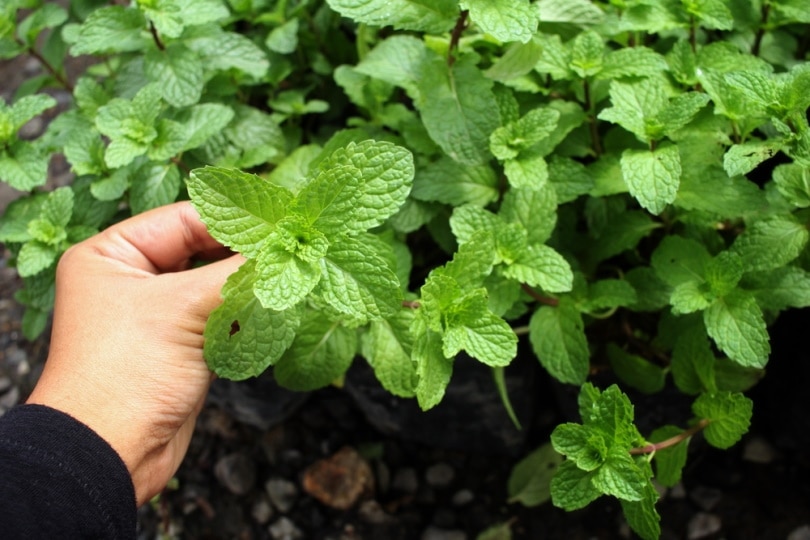
Basil has been a go-to companion plant for hundreds of years. It goes well with a long list of vegetables, fruits, and flowers. This applies to most mint species, including sage, rosemary, oregano, and savory, to name a few. Their odor scares slugs away, allowing lettuce leaves to grow and prosper.
And let’s not forget about the lovely smell, taste, and health benefits that basil and other mints have. By planting these herbs alongside a lettuce plot you’ll be able to “kill two birds” with one shot. On one hand, they’ll safeguard the crops. On the other hand, you can harvest some of the herbs and add them to your favorite dishes for that exotic flavor and health perks.
11. Chives
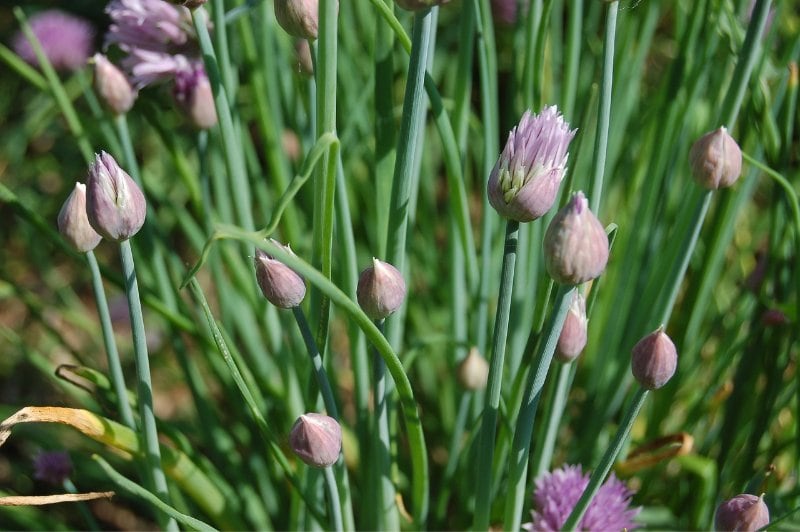
Are your plants being destroyed by pests before the crops can flourish? Chives can serve as a “barricade” against them. To achieve the best results, plant it right between the lettuce rows. This way, destructive bugs won’t be able to feast on the lettuce leaves no matter which side they approach it from.
12. Dill
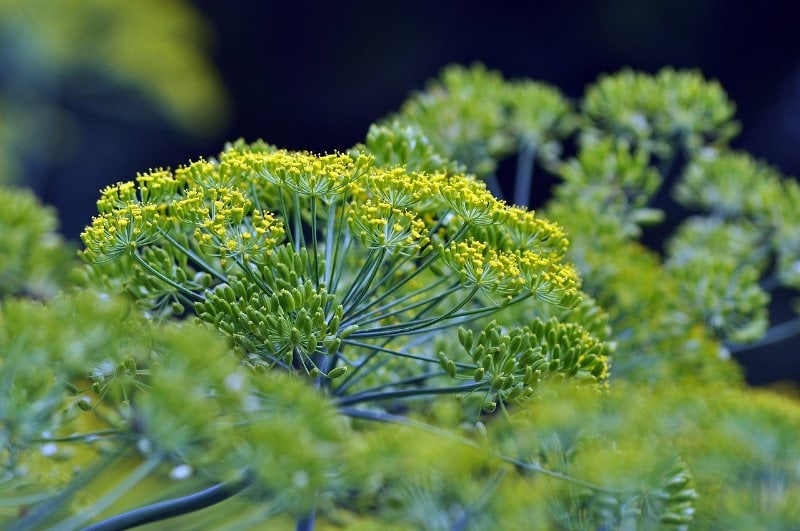
This is one of those can’t-go-wrong-with annual herbs that are widely used as medicine, food supplement, and, of course, bug repellents. Dill is strong against cabbage worms, loopers, and spider mites and serves as a natural pesticide. If you grow it next to asparagus, onions, garlic, and beans, you’ll get a mighty combination of plants that no shade or bug will be able to harm.
13. Chervil and Cilantro
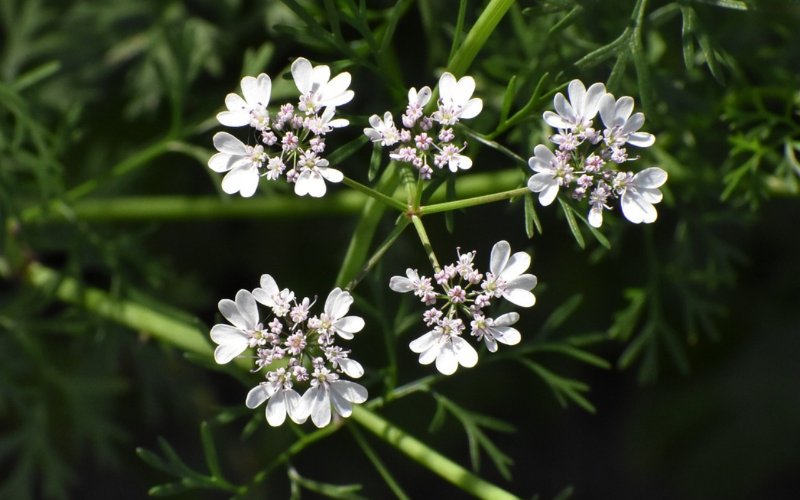
Slugs that eat lettuce leaves can ravish an entire crop in the blink of an eye. To prevent that from happening, consider planting chervil in the same plot as lettuce. It will attract many beneficial insects that kill pests and pollinate the vegetables. The same is true for cilantro flowers. Just like dill, they are the kryptonite for the most common and dangerous pests.
14. The Poached Egg Plant
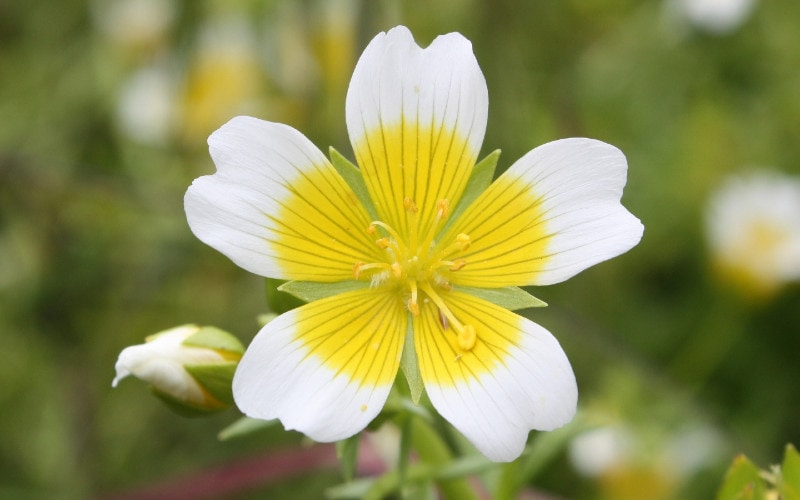
Native to Oregon and California, the poached egg plant is a wildflower. That means it can grow in rough conditions and fight off various bugs. In addition, this flower attracts beneficial insects (mainly hoverflies) that make short work of aphids. So, if your lettuce crops are having a hard time thriving in the backyard, poached egg plants might solve the issue.
15. Nasturtiums and Marigolds
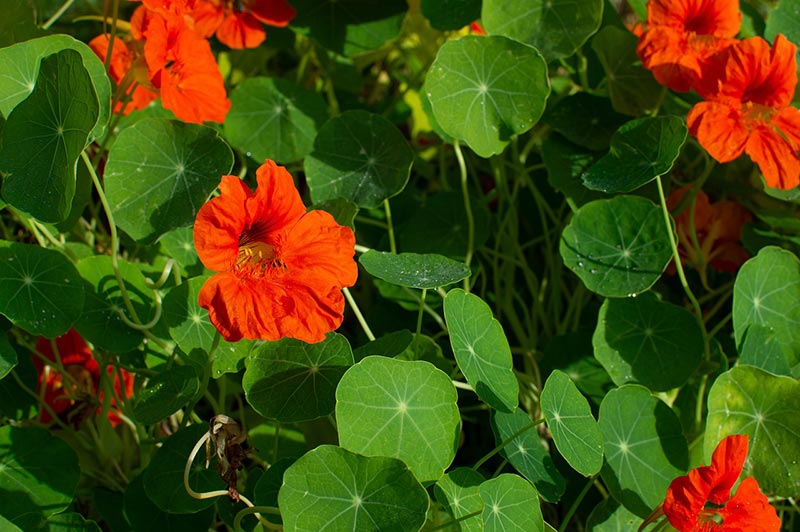
Looking for eye-catching flowers to plant in your garden? Nasturtiums will be a perfect choice. First, they’re beautiful; second, nasturtiums are a natural magnet for a wide range of pets, mainly aphids. So, what you should do is plant them a couple of feet away to serve as trap plants. The bugs will focus all of their attention on the flowers, leaving lettuce crops alone.
The same applies to marigolds as well. They are even prettier than nasturtiums and do an equally great job of attracting destructive insects. If you’re ready to sacrifice a field of lovely plants to ensure proper growth for your lettuce leaves, these flowers will help you with that.
16. Calendula

Not yet ready to let pests feed on marigolds or nasturtiums? Then go with the calendula instead. This is a widely cultivated companion plant for many vegetables, including, of course, lettuce. Again, slugs are a big problem for lettuce, but if you plant calendula a short distance away, they’ll focus all of their attention on it.
 Worst Companion Plants for Lettuce
Worst Companion Plants for Lettuce
- Brassicas: This might come as a surprise, but lettuce doesn’t go along with its own brothers and sisters from the “cabbage brotherhood”. Instead of helping each other grow, they compete for the soil and nutrients and make it hard for lettuce seeds to germinate properly. This is true for kale, cauliflower, broccoli, and Brussels sprouts.
- Mustards: Technically, mustards belong to the same family as cabbages, but they’re a little bit different. When growing next to other plants, mustard roots release a chemical compound that slows down the development of lettuce seeds, making them weak and vulnerable to pests.
- Fennel: The vast majority of herbs out there are beneficial for vegetables. However, fennel won’t do any good for your lettuce crops. Instead, it will halt their growth. So, make sure to plant fennel at least several feet away from your lettuce plot. Do the same with beans and peas.
- Digitalis: There are 20 different species in the Digitalis genus, and we mostly know them as foxgloves. So, why avoid them, exactly? Foxgloves attract various destructive bugs that can not only ravish but also infect lettuce leaves, leading to a disaster in the garden.
- Parsley: No, parsley won’t be a good companion plant for lettuce, either. The reason: when fully grown, a parsley bush tends to “take over” the soil, making it harder for lettuce to thrive. You can trim it back a bit, of course, but that might not always work.
Summary
Lettuce isn’t the most delicious vegetable per se, yet it does come with a long list of health benefits. And if you’re trying to get in shape, this plant will be a perfect addition to your diet. Another big pro of lettuce—it doesn’t take much effort or expensive fertilizer products to grow. All you’ll have to do is start the seeds alongside a beneficial plant.
Hundreds of vegetables, flowers, and herbs can safeguard lettuce crops from pests, harmful organisms, and temperature fluctuations. Be careful with your choice, though, because not every species can “get along” with lettuce. Pick a tried-and-true companion from our list, plant it carefully, and it will do the rest!
- UMN Extension – Companion planting in home gardens
- UMASS.Edu – Companion Planting in the Vegetable Garden
- Lettuce Companion Plants For Great Green Growth
- NIH.Gov – Biologically Active Compounds in Mustard Seeds
- The Connecticut Agricultural Experiment Station – Foxglove
- UGA.Edu – Trap Cropping for Small-Market Vegetable Growers
- Extension.Illinois.Edu – Eating Beets from Root to Stalk
- NewMexicoStateUniversity – Legumes Feed Families and Soil
- HomesAndGardens – Carrot companion planting
- MasterClass – 16 Plants to Pair With Lettuce
- HappySprout – Does basil repel mosquitoes?
- Companion Planting with Cilantro
- NCState Extension – Key to Lettuce Pests
- Web.MD – Health Benefits of Basil
- Dr.Earth – Scallion insect control
- Almanac – Growing Turnips
Featured Image Credit: chridan, Pixabay
Contents


 Flowers and Herbs
Flowers and Herbs